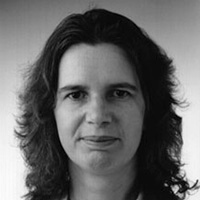
One example of an associating polymer network is mucus. Using large scale modeling, my group investigates if and why the adherence of phage to mucins helps them to hunt for bacteria. This work is in collaboration with other researchers in the Viral Information Institute (Human Health).
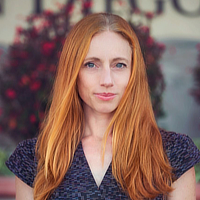
The Forsberg lab is highly interdisciplinary and uses a combination of biology, analytical chemistry and bioinformatics to study the world of symbiotic relationships between microbes and their hosts. Currently the lab is working towards developing gut reactor models for studying cellular communication between the microbial communities inhabiting our guts, the gastrointestinal tract and how metabolites impact mood and behavior. Although the lab has a strong focus on the gut microbiome, there is a focus developing analytical tools required to understand symbiosis in general and how microbiomes are associated with innate health on a systems-wide scale.
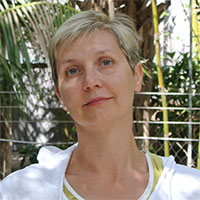
Methane is a critical component of Earth's carbon cycle that is causing up to 20% of the Earth’s warming. CH4 is emitted from a variety of natural and anthropogenic sources. Biological methane conversion is the main mechanism that controls the methane flux in nature and, if applied to human-made systems, could offer a sustainable approach for global warming stabilization and the possibility of reduction. Research in Dr. Kalyuzhnaya group is centered on two primary challenges in microbiology: gaining a better understanding of the functional capabilities of methane-consuming microbes in nature and applying the newly discovered principles to the development of novel sustainable technologies. The research extends from the characterization of key elements (enzymes, regulators) essential for microbial methane utilization to the elucidation of the spatial organization, evolution, and functional plasticity of the related functions, and from metabolic modeling of C1-biocatalysis to construction of novel microbial traits for biotechnological applications.
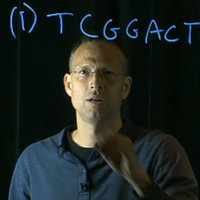
My lab develops and applies bioinformatics and statistical software tools for analyzing high throughput multiomics data (e.g., 16S, metagenomics and metabolomics) from complex microbial communities. Our lab works in two main research areas: the built environment (BE) and the gut microbiome. Built (human) environments provide fascinating and complex habitats for microbial diversity. Despite the fact that Westerners spend approximately 90% of their time indoors, we know little about the diversity of microbes in these environments. Our studies of hospitals, daycare centers, therapeutic pools, shower curtains and airplanes have shown human environments contain a rich mixture of environmental (soil, water) and human-associated microbes. At present, we are using deep-sequencing, quantitative profiling and longitudinal studies to investigate the influences of moisture and building material composition on bacterial, viral and fungal BE community diversity, growth and development. In collaboration with colleagues UC San Diego, we are also studying the relationship of gut microbiome to Polycystic Ovary Syndrome (PCOS). PCOS is the most common endocrine disorder in women, with a prevalence of 10-15% worldwide. In addition to a reproductive phenotype that increases the incidences of infertility, miscarriage and pregnancy complications, women with PCOS also have metabolic abnormalities and an increased risk of obesity, type 2 diabetes, gestational diabetes, and hypertension. The main objective of our research is to understand the role of the gut microbiome, and its interactions with host physiology and chemistry, in the pathophysiology of PCOS.
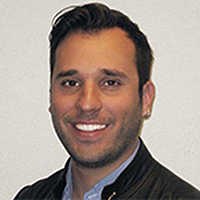
Antoni Luque’s research spans the areas of theoretical and computational biophysics and has focused on the study of viruses and chromatin fibers. He has investigated these macromolecular systems by combining condensed matter physics, applied mathematics, and computational biology in collaboration with experimentalists. His aspiration in the Viral Information Institute is to develop multiscale mathematical and computational models to understand the impact of the molecular structural properties of viruses in viral ecology.
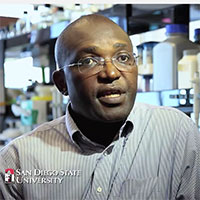
The metagenomic technology has revolutionized the field of Virology by allowing with relative ease the discovery of a vast array of novel viruses in various environmental, animal and human samples. Using his experience in virus discovery, John Mokili is spearheading his research toward the studies the etiology of diseases with unknown origin. Current John Mokili’s research focuses on the characterization of the virome in blood, feces, cerebrospinal fluids collected from patients suffering from nodding syndrome in remote African villages. The viral population in these samples will be compared with those of healthy individuals and blackflies (Simulii sp., suspected vector of nodding syndrome). The data collected in this research will eventually lead to determining the cause of nodding syndrome. In addition, in collaboration with Rob Edwards (Computer Science) and colleagues at UCSD, John Mokili’s laboratory is exploring new territories in the search of the etiology of colorectal cancer using viral metagenomics, proteomics and metabolomics.

Byron is a organic synthetic chemist with expertise in designing and synthesis of novel probes of biological processes, with emphasis on fluorescent nucleotides permitting monitoring of replication. Byron will contribute his expertise to developing new or improving existing probes for biological processes.

My lab investigates the beneficial and harmful interplay between host (human and animal) and microbe(s) (bacteriophages and bacteria) using approaches that bridge microbiology, immunology, genomics/bioinformatics, in vivo and mathematical models, and clinical research.
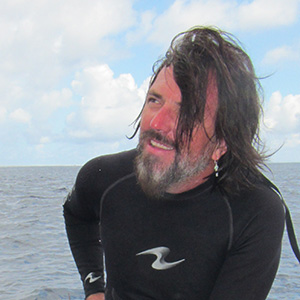
Forest Rohwer is a Fellow of the American Academy for Advancement of Science (AAAS), American Academy of Microbiology (AAM) and Canadian Institute for Advanced Research (CIFAR). He led the development of “viromics”, which involves isolating and sequencing the RNA/DNA from all of the viruses in an environmental sample. From this data, it is possible to determine what types of viruses are present and what functions they are encoding. Dr. Rohwer uses viromics to study ecosystems ranging from coral reefs to the human body and has shown that most genomic diversity on the planet is viral. Dr. Rohwer has published >200 peer-reviewed articles, two books, was awarded the International Society of Microbial Ecology Young Investigators Award in 2008 and listed as one of the World's Most Influential Scientific Minds (Thomson Reuters 2014).
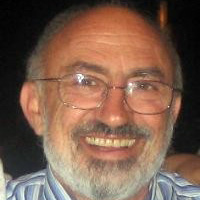
Peter Salamon, with his research associates Ben Felts and Jim Nulton (both long-term adjunct faculty at SDSU), have created mathematical modeling tools to make sense of metagenomic data and express in quantitative terms the biological description of different environments. Their mathematical tools have been critical to insightful analyses not possible without them, and his collaboration with Forest Rohwer has been instrumental in revealing the power of metagenomics as an approach to microbial ecology and evolution with applications to both human and environmental health. Peter’s expertise in artificial neural networks has permitted developing novel algorithms to predict the function of viral genes that are not similar to any genes with known function. These algorithms are much more sensitive to very subtle functional signatures that are presently not detected by the traditional algorithms such as BLAST. The predictions made by the neural networks have been validated by the Segall lab or with external collaborators using electron microscopy and crystallography, respectively.
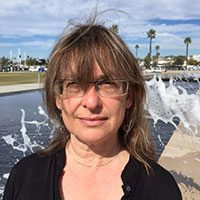
Together with Forest Rohwer, Anca Segall helped develop strategies for using sequencing-based methods to probe whole communities rather than single cells or viruses. She and Peter Salamon initiated the use of artificial neural networks to more sensitively probe and predict the function of genes without known function. She combines her genetic expertise, which includes modern recombineering technologies, with biochemical and cell biology assays to validate the predictions made by the newly developed neural network. She and her colleagues have combined computational, electron microscopy, and crystallographic approaches, to identify the function of over 4% of genes in the publically available metagenomes. The Segall lab collaborates with Suckjoon Jun (UCSD), with the SDSU MEMS Lab in Engineering, headed by Sam Kassegne, and with Peter Salamon, to follow bacterial growth and responses as well as interactions with phages using microfluidics devices that allow monitoring individual cell behaviors. Individual cell analyses provide a much more accurate image of cell physiology than population mehods. With help from Chemistry colleagues Tom Cole, Doug Grotjahn, and Byron Purse, and in collaboration with the optics expertise of Matt Anderson and the future Biophysicist, Anca Segall uses chemical fluorescent probes to investigate the function of unknown virally-encoded genes by analyzing their effect on host cell metabolism.
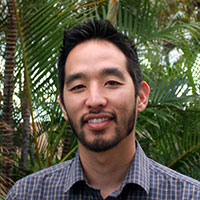
Microbes are extremely important to the development and health of diverse animals. Our understanding of how microbes interact with their hosts is only in its infancy. Nick Shikuma studies microbial mediated animal development. While many bottom-dwelling marine animal populations are established and maintained by free-swimming larvae that recognize cues from surface-bound bacteria to settle and metamorphose. Nick discovered that ordered arrays of phage tail-like structures produced by a marine bacterium induce the metamorphosis of a marine tubeworm. His findings begin to explain the long-standing observation that marine biofilms trigger the metamorphosis of benthic animals andexpand the known diversity of structures and functions of phage-like particles. Nick’s laboratory applies genetic, genomic, biochemical- and cell-biology approaches to study the interactions between model bacteria and animals.
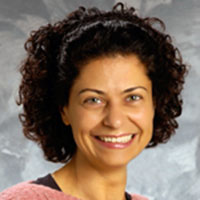
The coding properties of transfer-RNA reside in part in the post-transcriptional modifications of nucleosides in its anticodon stem-loop (ASL). These modifications fine tune gene expression by enhancing cognate and wobble codon recognition, and control ribosomal frameshifting and translocation. Manal combines biochemistry, X-ray crystallography and bioinformatics to elucidate the biosynthesis pathways to modified nucleosides of tRNA and identify new drug targets in these pathways. Her current focus is on structural and mechanistic investigations of the biosynthesis enzymes for queuosine and threonylcarbamoyl adenosine, two ASL modifications implicated in bacterial virulence and retroviral replication, respectively. These studies lay the experimental foundation for future discovery of novel antibacterial and antiviral agents by structure-based design.
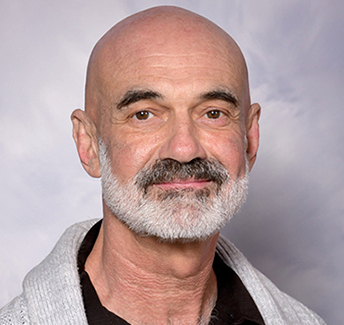
In his 14 years at SDSU, Roland studied HIV as well as RNA viruses that are transmitted by mosquitoes—how they affect cells and their possible drug treatments. He was known for a remarkable dedication to his students, refusing to step back from teaching even while severely weakened by advanced lung cancer and its treatment. Roland died April 26, his 58th birthday, while hospitalized in the final stages of the disease. You can read more about Roland's life and research at these links: (SDSU Obituary, Viral Information Institute Obituary).
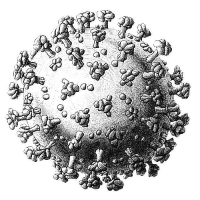
Your generous contribution will help support the viral ecology and personalized medicine research efforts at San Diego State University.
Send Your Gift